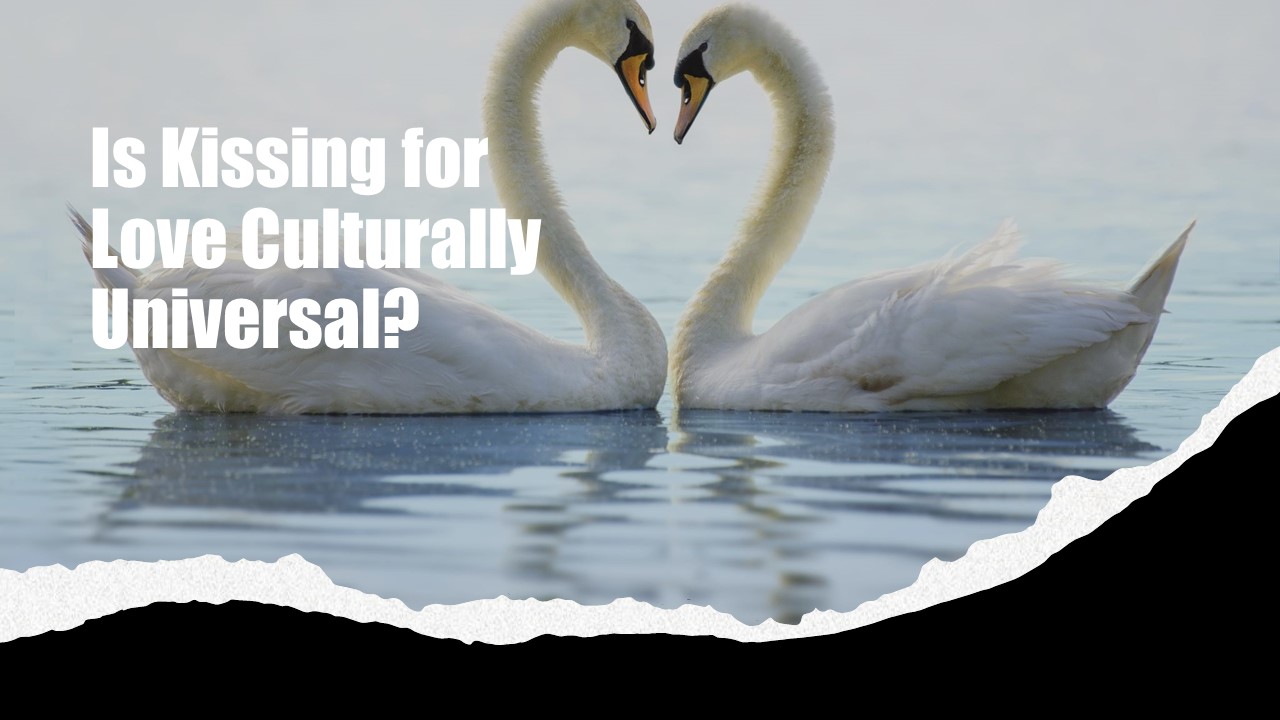Is kissing cross-culturally universal? Who invented kissing to express love to each other?
It could seem that sexual kissing is a universal cultural practice. Artists widely portrayed the acts of kissing in a variety of material cultures, including books, paintings, and other forms of media.
The Myth of the Cultural Universality of Kissing for Love
Scholars from the behavioral and social sciences widely believe that romantic-sexual kissing is a common way of communicating love in many cultures. Some researchers claim that romantic and sexual kissing is a common practice among mating partners in over 90% of cultures (Fisher, 1992; Kirshenbaum, 2011; Wlodarski & Dunbar, 2013).
The widespread claims about the cross-cultural ubiquity of kissing across societies seem overrated.
Kissing for Love Is Not Culturally Universal
Ethnographic analyses of modern societies have shown that sexual and romantic kisses are not cross-culturally universal. The data from a large cross-cultural sample set (n = 168 cultures) documented the presence of romantic-sexual kissing only in 46% of societies. It is 77 out of 168 cultural samples. The remaining 54% of societies—91 cultural samples—had no evidence of romantic kissing among their populations. (Jankowiak, Volsche, & Garcia, 2015, p. 535).
The study found that romantic kissing is least common of all among Central American cultures and most common in the Middle East and Asia. It is nearly ubiquitous in northern Asia and North America.
Cultural anthropologists found no evidence of sexual and romantic kisses in New Guinea, Sub-Saharan African, and Amazonian foraging or horticultural societies.
Analysis of this cross-cultural ethnographic data showed that the presence and frequency of romantic kissing are more widespread in cultures with high complexity of social stratification. People in complex societies with distinct social classes, such as modern industrialized societies, have a much higher frequency of this type of kissing than people in egalitarian societies.
Culturally Specific Perceptions of Kissing for Love
The perception of romantic kissing across non-kissing societies varies. In some societies, people show simple disinterest in this action. In other societies, people consider it amusing, while in others, they experience total disgust.
For instance, Trobriand Islanders and the people across the Pacific Ocean in Melanesia were bemused by the foreign custom of kissing (Malinowski, 1929, p. 330).
“Certainly it never forms a self-contained independent source of pleasure, nor is it a definite preliminary stage of love-making, as is the case with us. This caress was never spontaneously mentioned by the natives, and, to direct inquiries, I always received a negative answer. The natives know, however, that white people “will sit, will press mouth against mouth–they are pleased with it.” But they regard it as a rather insipid and silly form of amusement.”
The Tsonga people of southern Africa perceived the practice of kissing as disgusting.
“Kissing was formerly entirely unknown… When they saw the custom adopted by the Europeans, they said laughingly: “Look at these people! They suck each other! They eat each other’s saliva and dirt!” Even a husband never kissed his wife”
(Junod 1927, 353-354)
Here is another example among the indigenous Tapirapé people of Central Brazil. In that culture, “couples showed affection,” but “kissing seems to have been unknown.” As Wagley (1977) explains,
“When I described it to them, it struck them as a strange form of showing physical attraction … and, in a way, disgusting. It was common, instead, to see a married couple walking across the village plaza with the man’s arm draped over his wife’s shoulder. A couple might stand close to each other during a conversation with the man’s arms over his wife’s shoulders and she holding him around the hips”
(Wagley, 1977, p. 158).
